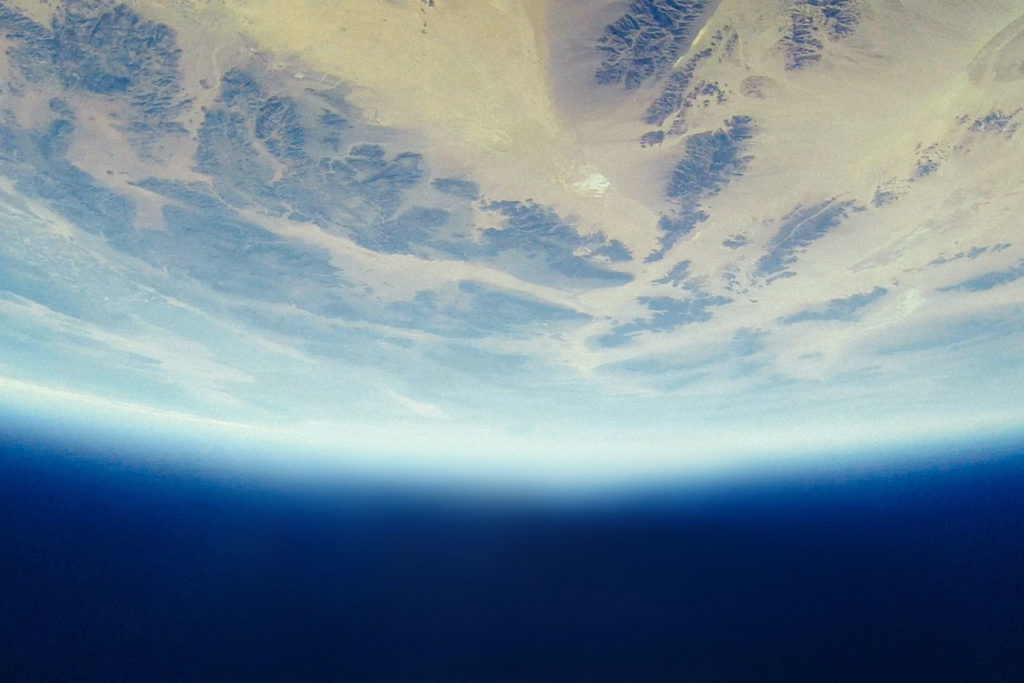The Kalam argument tries to show that the universe is not eternal, that it have to have a beginning. This argument was first formulated by Christian philosophers, but it did not find its full force until medieval Islamic thinkers devoted attention to the argument. ‘Kalam’ is an Arabic word meaning “talk” or “speech.” Its connotation, however, is much broader and encompasses something closer to philosophy or theology.
At the core of the argument is an understanding of the two kinds of infinities: potential (or abstract) infinites and actual (or concrete) infinites. The Kalam argument takes what we can know about infinite series of numbers and demonstrates the universe must have had a beginning.
Potential infinites are sets of numbers that are continually increasing by adding another number to the series. For example, seconds on a stopwatch are potentially infinite. Once the start button is pressed, a set of numbers or moments will be generated (1, 2, 3, etc.) until the stop button is pressed. If the stop button is never pressed, the seconds potentially will accrue forever.
However, potential infinites are never actually infinite. A potential infinite is always a finite set of numbers to which another increment can be added. It will never reach a point where it becomes infinite, no matter how long more numbers are added.
Actual infinites are sets of numbers to which no increment can be added since, by nature of their infiniteness, the set includes all numbers—there is nothing to add. If this is hard to imagine, there is good reason: actual infinites do not exist and cannot exist in the physical world. If actual infinites did exist in the physical world, we would see absurdities and effects we could not live with, literally.
For instance, let’s say you had a CD collection that was infinitely large, and each CD had an infinite number of songs on it. If you listened to one CD, you hear as much music as if you had listened to all of the CDs—an infinite amount— and yet those infinites are of different sizes—a nonsensical notion. Let’s also say that there were only two artists in your CD collection, Bach and the Beatles, and that every other CD was by the Beatles. This would mean that you had as many Beatles CDs as you would Beatles and Bach CDs combined; they would both be an infinite number. But at the same time they would be different sized infinites. And would the number of Beatles CDs be odd or even? It must be one or the other, but to speak of infinity in such a way is irrational.
Or imagine a racecar driver and his son. The racecar driver is making circuit after circuit on a track one mile long. Meanwhile in the infield, his three-year-old son is on his tricycle going in circles. The son is completing a dozen or so circuits to his dad’s one. But if they had each been going for an infinite amount of time, they would have completed an equal number of circuits!
If it makes your brain hurt or is confusing at all, then you are beginning to understand why actual infinites do not exist in the physical world. These examples are just interesting brainteasers or puzzles. The fact is extremely important that if X = Y, then X cannot also be 12 times greater than Y. You would never want to cross a bridge, ride in a car, or live in a house designed by an engineer who didn’t recognize or didn’t care about the absurdities of actual infinites.
This demonstration of the non-existence of actual infinites can be applied in two real-world areas: time and causality. The best way to show that time is not infinite, that it had a beginning, is to observe that there is a “now.” If now exists, then time cannot be infinite. To show this, picture the moment “now” as a destination, like a train station. Then picture time as train tracks that actually are infinitely long. If you were a passenger waiting on the train to arrive, how long would you have to wait? The answer is: forever. You can never reach the end of infinity; thus, infinitely long train tracks cannot ever be crossed. There is no end to arrive at, no station. If infinitely long train tracks could be crossed, they would be the equivalent of a one-ended stick, a nonsensical notion. In fact, this is the opposite limitation of potential infinites. Just as potential infinites are finite numbers that can never turn infinite, actual infinites could never reach the end of their infiniteness and turn finite. But there is an end, a “now.” The train does arrive at the station. This means the tracks of time cannot be infinitely long. There cannot be an infinite number of preceding moments prior to the present moment. The past is not an actual infinite. Thus, time had to have a beginning.
Time, however, did not cause itself to spring into existence. If it had a beginning, then something initiated it. This is where causality comes into the picture. There is no such thing as an effect that was not caused. You are an effect of a biological process caused by your parents. These words you now read were caused by my typing on a keyboard. The current state of the universe is an effect caused by various astronomical and physical conditions. Note, however, that each of the causes mentioned also areeffects. For example, your parents are not only your cause, but they are the effects of their parents, who were the effects of their parents, and so on. But, as the non-existence of actual infinites shows, the chain of causes cannot regress forever. The train station in this case is made of present causes; because we have causes now, there must be a beginning to the sequence. Thus, there must be a cause that is not an effect, an uncaused cause, or first cause. Since the universe is an effect, it must have had a cause itself.
The Kalam argument tells us the universe had a beginning and the beginning was caused by an uncaused cause. At this point, there are only two options: either the cause was personal or it was impersonal. Reflection on what this uncaused cause would look like leads us to a conclusion rather quickly. The first cause would require an ability to create. Without this ability, nothing could be created. It also would require an intention to create, a will to initiate the universe. Without this will to create, nothing would be created. It would require a non-contingent being, one whose existence depends on nothing but itself. If it was contingent, then it would simply be one more effect in the chain of causes and effects. And it must be transcendent. The cause of the universe must be outside of and apart from the universe.
Now add all these things together. What kind of thing relies on nothing for its existence, has the power to create something from nothing, has a will to do it or not do it, and has the characteristic of existing outside of the creation?
Does this sound like a personal or an impersonal being? Personal, of course. Thus, the Kalam argument brings us to the conclusion that the universe had a beginning that was caused by a personal, powerful, transcendent being.
A question that frequently arises at this point has to do with God’s infinite characteristics: “If there is no such thing as an actual infinite, then how can God be infinitely good or loving?”
When we speak of God’s infinite characteristics, we are speaking in a metaphorical manner. We do not mean God has an infinitely large quantity of goodness and love with which He funds His grace and mercy. We mean He is the ultimate embodiment of goodness and love. These characteristics are without measure and speak to the quality of His character, not the quantity of His characteristics.
This post is an excerpt from the Holman QuickSource Guide to Christian Apologetics by Doug Powell. It is used with permission. You can purchase this resource in its entirety here.
For more on this topic:
Does God Exist? – The Cosmological Argument
Does God Exist? —The Kalam Cosmological Argument
Does God Exist? – The Leibnizian Cosmological Argument
Does God Exist? – The Design Argument
Published December 13, 2017




